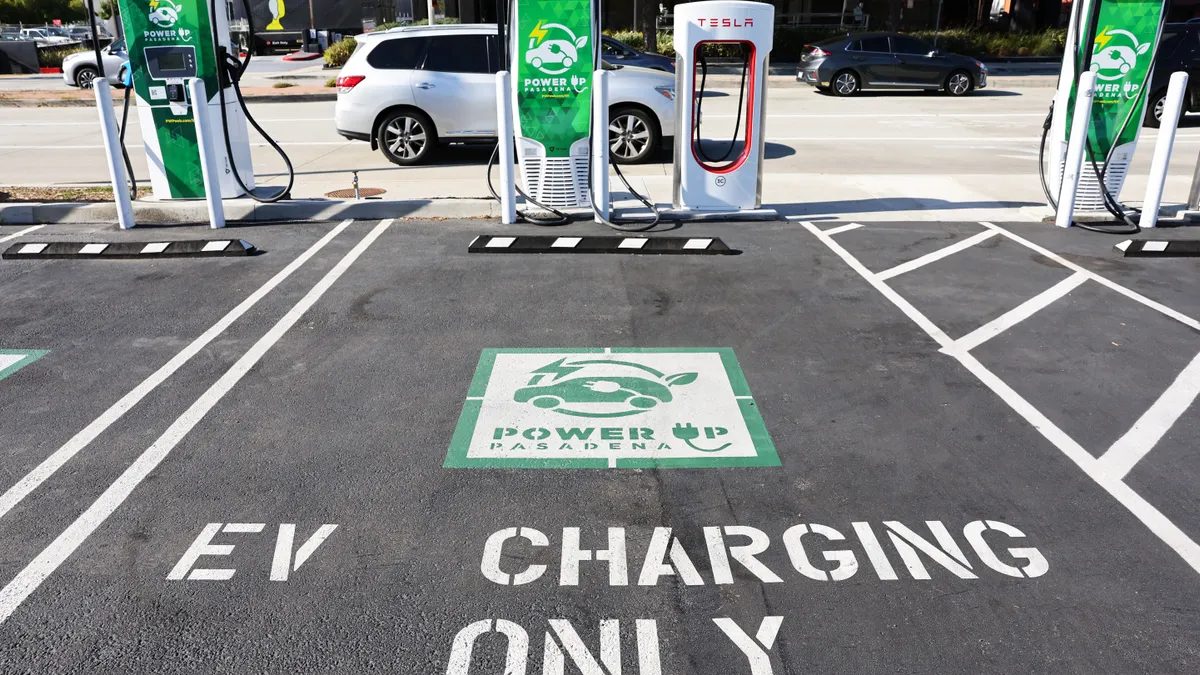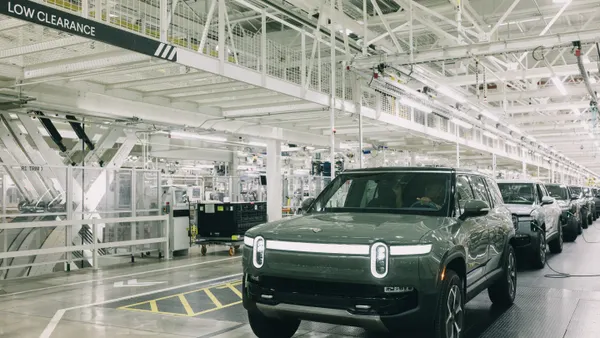Dive Brief:
- Utilities are preparing for unprecedented demand growth from electric vehicles but say it is a “misconception” that the power grid will be overloaded and become unstable. New system planning and load management tools must be developed, but EVs are a flexible load that experts say can improve grid resilience.
- A policy brief published Monday by the Zero Emission Transportation Association examines key energy considerations associated with the rise of electric transportation, and provides case studies of how major utilities are approaching the EV transition.
- In California, Pacific Gas & Electric has almost 500,000 electric vehicles in its territory and anticipates 3 million by 2030. They are a “critical piece” of PG&E’s strategy going forward, Nick Morelli, a strategic analyst of decarbonization strategies at the utility, said Monday in a discussion hosted by ZETA.
Dive Insight:
PG&E expects system demand to increase up to 70% over the next two decades as more EVs are added. To meet that demand efficiently, the utility developed a forecasting tool and integrated it into its distribution planning processes.
“A common misconception that we hear a lot is that the grid is not ready, or that increased loading from electric vehicles will overload the system,” Morelli said. “It's definitely true that electric vehicles will represent unprecedented load growth,” but the flexibility of EV charging “actually provides a great opportunity to improve resilience.”
EVs in the United States consumed 6.1 TWh of electricity in 2021, according to ZETA, a group advocating for full EV adoption by 2030. An additional 15-27 TWh of annual new power generation will be needed between now and 2050 to meet growing demand from electric transportation.
“History has proven increases of this magnitude to be accomplishable,” according to the group’s policy brief. New renewable and zero-emitting generation resources will be needed, along with strategies to manage load and the streamlining of regulatory processes to interconnect resources.
PG&E initially relied on customer applications to understand where additional capacity was needed, but has since developed more proactive tools, said Morelli.
“The reactive approach worked relatively well for utilities in the past as you avoid stranded assets,” Morelli said. “But just due to the speed that loads materialize ... instead of taking that peanut butter approach of just spreading and disaggregating load across our system, we individually analyzed the most common segments of electric vehicle charging and we developed an adaptable forecasting tool.”
Of the 3 million EVs expected on its system, PG&E says 2 million will be integrated with the grid: participating in time-of-use rates, managed charging or vehicle-to-grid bidirectional charging programs.
South of PG&E’s territory, Southern California Edison officials also say EVs represent an opportunity. The utility has more than 430,000 EVs in its service area.
“One of the big misconceptions I hear ... is that EVs will negatively impact grid resilience,” said Chanel Parson, director of SCE’s building and transportation electrification programs. But a typical passenger vehicle is only operating a fraction of the day, leaving up to 23 hours when it could be charging or discharging back to the grid, she said.
“Flexible load can help utilities balance the natural daily peaks on the grid, and make the grid more resilient by exporting load to the grid or removing home and building load,” Parson said. Today, SCE utilizes vehicle-to-grid applications in emergencies but is “setting the groundwork” to make it a common strategy, she said.
The utility also offers infrastructure programs to fund and install utility and customer-side infrastructure, vehicle rebate programs and customer advisory services, she said.
But to continue advancing the transition, utilities say they need greater certainty around the state and federal government’s commitment to EVs in order to advance grid upgrades and build out capacity. And persistent supply chain issues must be addressed.
“We are seeing long lead times and exponentially higher costs for critical equipment that support grid stability and EV infrastructure,” Parson said.
Regulatory frameworks that allow utilities to invest “proactively” are important, said Cliff Baratta, Consolidated Edison’s electric vehicle strategy and markers section manager. The utility serves New York City and is preparing for 230,000 EVs in its territory by 2025. Since 2017 it has been working to encourage grid-beneficial charging through its SmartCharge program, which offers incentives for drivers to avoid charging during peak times.
“Here in New York, we're meeting all electric service requests for EV chargers and the impact on the grid has been limited so far,” Baratta said. “When we look out several years, it's going to become a challenge. We anticipate extremely large loads coming.”













